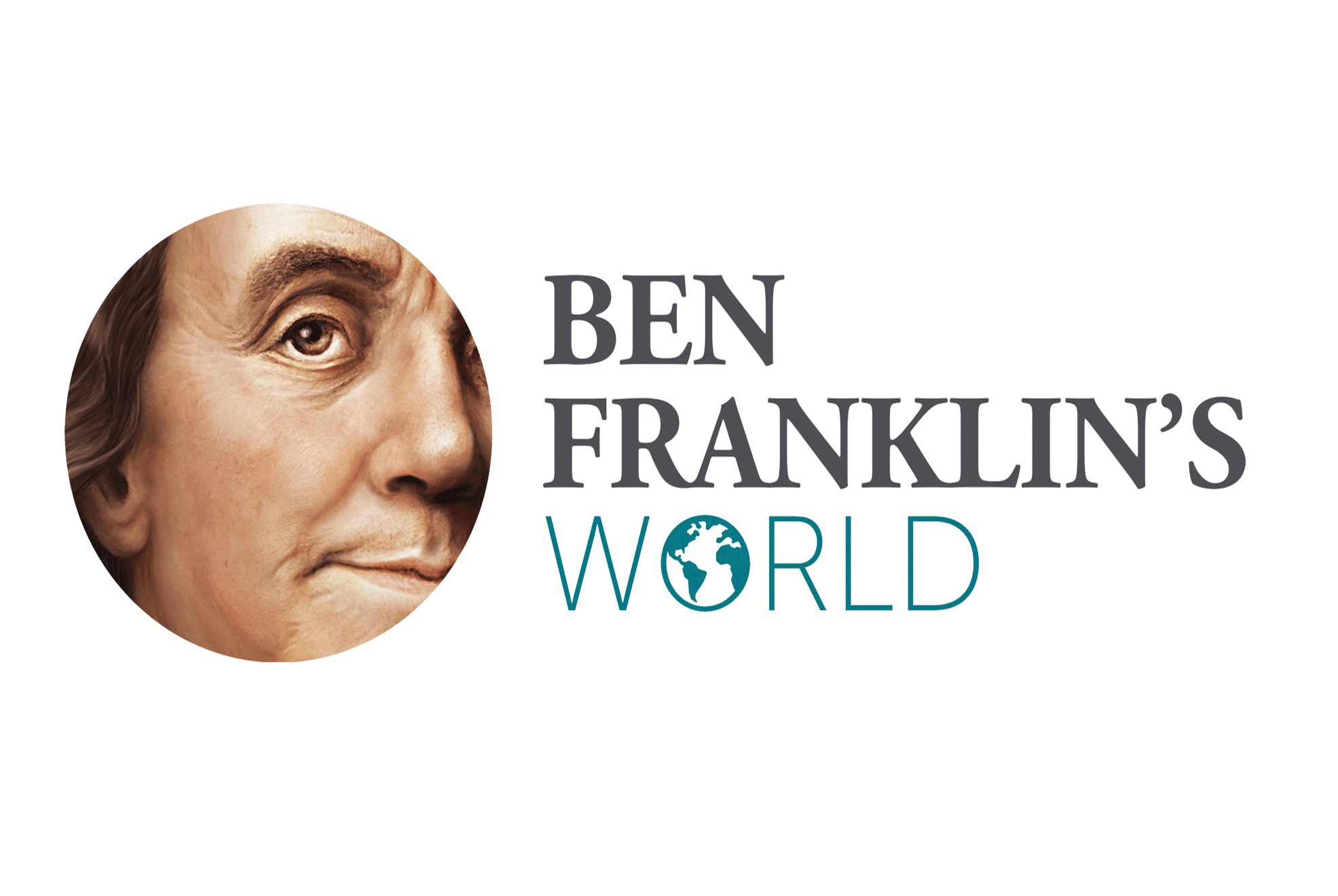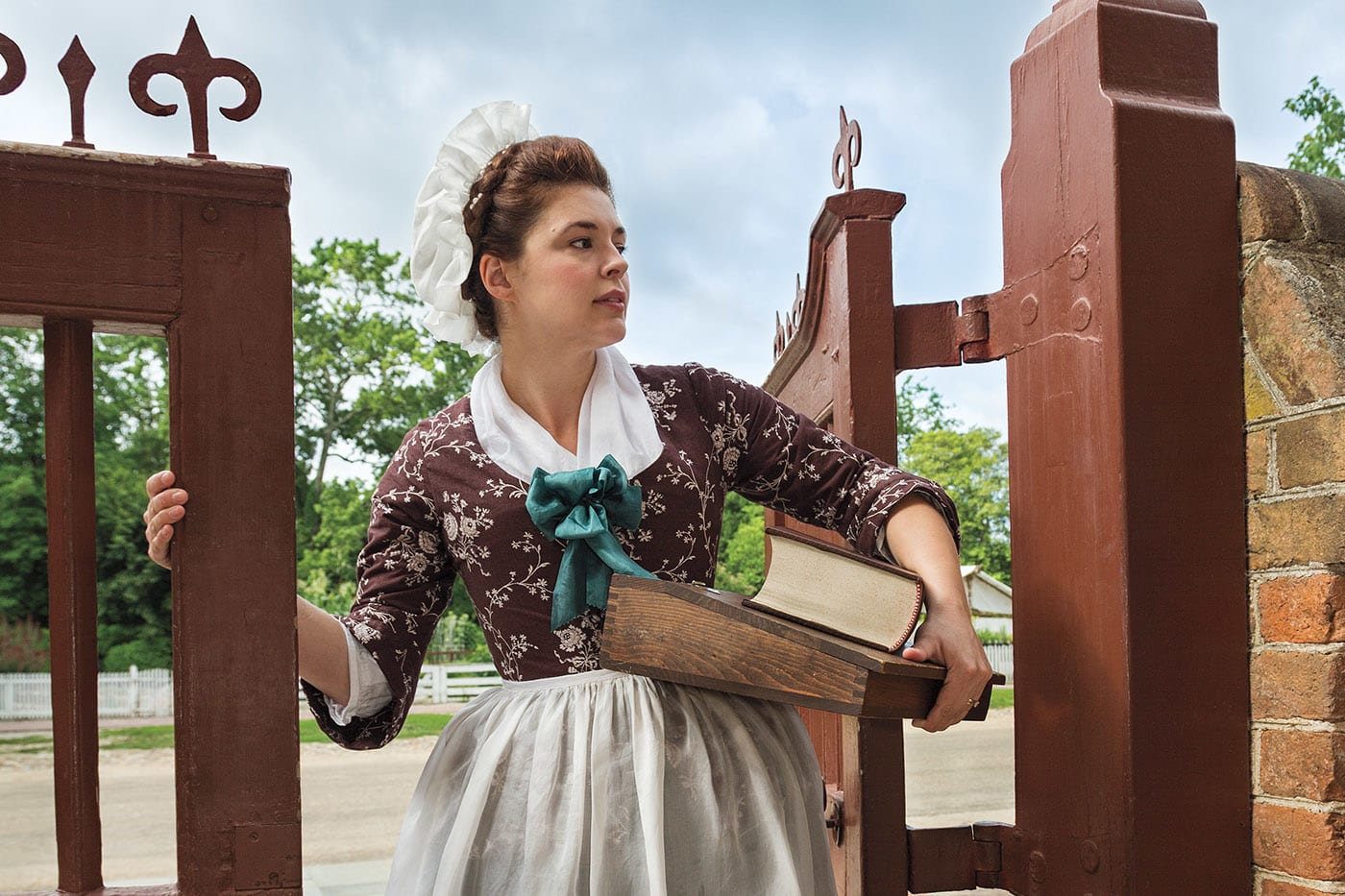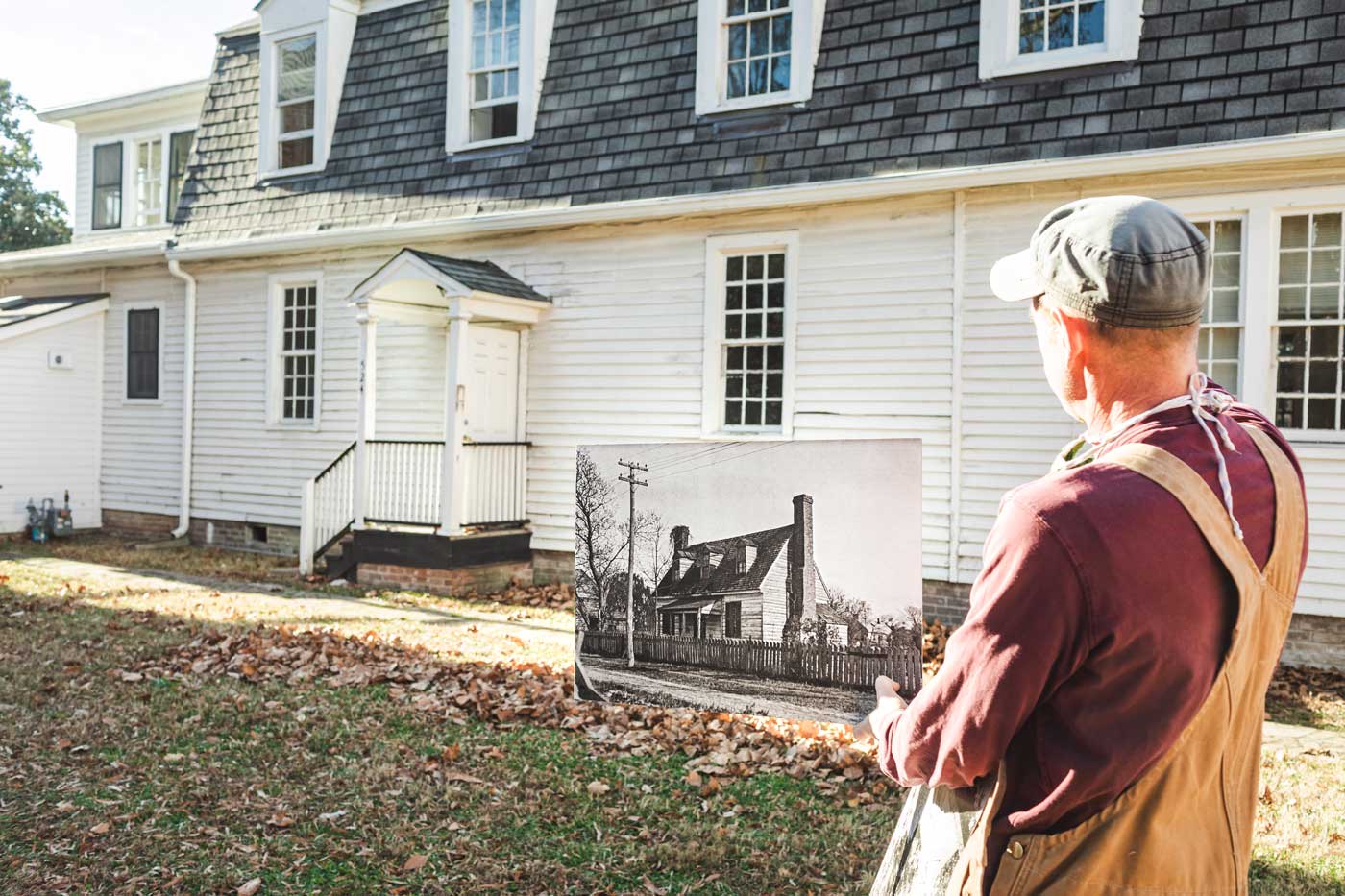Hundreds of Williamsburg’s enslaved and free Black children attended the Bray School during the 1760s and early 1770s. The building was long believed to have been lost. But in 2020, researchers discovered that a building on the William & Mary campus was the original Bray School. In February 2023, the school was moved to the Colonial Williamsburg Historic Area.
Since the school was moved, work has been underway to prepare the school to be opened to the public in September 2024. Below is an interview we conducted with Matthew Webster, Executive Director of Architectural Preservation and Research, and Jennifer Wilkoski, Shirley and Richard Roberts Architectural Historian, about their work at the Bray School.
What has been going on at the Bray School site since the move?
Jennifer Wilkoski: Part of the moving process was getting a new foundation ready. The building is now sitting on a modern concrete foundation with a brick veneer.
Since then, we’ve been doing some restoration work to the chimney. There’s one surviving chimney that has actually moved twice now, once in 1930 and of course in February. Unfortunately, the western chimney was torn down in 1930 when it first moved to the William & Mary campus site. Just this week I’ve been working on designing the new chimney, which will be very similar to the eighteenth-century chimney that survived.

We will be adding an environmental control system, but part of our job is to be like magicians. We have to hide things. We don’t want visitors to see the modern features of the building. Of course in the eighteenth century, they didn’t have heating and air conditioning or electricity. But to preserve this building, we want to make sure it’s climate controlled. We are threading duct work up through the new chimney to ensure that it’s not visible to visitors, which will protect the building and keep it stable.
What has surprised you in your recent work on the Bray School?
JW: As we’re peeling back the modern features of the building, we’re still finding things. When we were removing the roof, we found things in the eave spaces. We recently removed a later floor that had been placed on the historic eighteenth-century floor. When we got down on our hands and knees and looked into the cracks in the floorboards, we found some straight pins, a bead, and lead shot.

We found rat’s nests holding pieces of paper. We found pieces of William & Mary football tickets from the 1930s, which ties back to the building’s history as a dormitory. Just this week we are discovering what the original fireplaces looked like, because we’re starting restoration work on that part of the house. Peeling back the modern layers, we’re getting into what the eighteenth century looked like.
Matthew Webster: The amount of information that survived is incredible. Even tiny details . . . an eighteenth-century nail slipped under a stair tread, likely by the carpenter building the stair to stop it from squeaking . . . fingerprints in the original brickwork from the chimney. There’s a dog print in there. In some cases, these are from people whose stories don’t survive in the written record—this is their story, these little marks and details.

We still have the floors they walked on, a stair they walked on, things they touched. The newel post used to be square with sharp corners, and over time it’s been touched by so many people that it’s rubbed down so that the corners are now curved. You just think about the people who touched that, those stories and that information are all still there today.
JW: It’s hard to convey when you’re not seeing it in person. We have uncovered the floors now, so we’re hoping that we’ll see some wear patterns where furniture was moved or where people walked. The lived experience of the building is really important, and that’s something we actively look for.
What does spending time in that space tell you about the people who inhabited it in the eighteenth century?
JW: Where the building first stood, the campus of William & Mary is visible from one side of the house, and out the front windows is the Wray carpentry site. We have two original window sashes that they could have been looking out of, seeing these two very different worlds: the world of William & Mary on one side, and the industrial world of the carpentry yard on the other side.
The rooms are really small. The classes sizes were around 30 children. I’ve been in the building with around 20 people in one room, and it’s very, very tight. When you think about having 30 children in the room, you can start to imagine what that would have been like.

MW: School-age children spend most of their time, most of their lives, in the classroom. These children were going to school seven days a week. On Sundays they would gather there and go to church. Those rooms, that site, that’s their world.
I was just thinking, do I remember my second-grade classroom? And yeah, I do. I remember what happened there, because every Monday through Friday, that’s where I was. So this is a place that is very familiar to these children.
What does the Bray School project mean to you as professionals?
JW: This project feels different. It has a lot of history, humanity, and emotion behind it. It’s kind of an emotional restoration. I hope that future visitors really understand how much blood, sweat, and tears went into this.
For me, professionally, this is a really special project. A lot of us working on this project feel the same way. It’s something a little bit different, more emotional, and closer to the heart.
MW: Jenn’s right. I’ve also worked on a lot of big projects, and this one’s different. I think there’s enormous pressure with this project. It’s not necessarily bad. It’s not pressure from anyone here at Colonial Williamsburg or the community. It’s the pressure of the past. It’s important to get this right.
What’s next at the Bray School?
MW: We’re transitioning from taking away modern additions, and we’re now moving toward putting details back. Hopefully by the end of the year, you’ll see that roof frame back up there. Once we have the building enclosed, we will move into the finish work and mechanical work.
JW: For me, it’s a lot of design work. If we’re missing something like a fireplace mantel, which we are at the Bray School, I not only have to figure out what that looked like, but also how that will be installed, who will make it, and how they’ll make it.

MW: We have been working on this building for a remarkably short amount of time. We’ve only been working on it since January 2022.
JW: This is an extremely fast-paced project. We’re putting in an incredible amount of effort, time, and work, so that we’re ready to open in September.






